- Blog
- How to Fill Out a CMR Form - Ultimate Guide
How to Fill Out a CMR Form - Ultimate Guide
What is a CMR? How to fill out a CMR? We got you covered! Let’s dive into all the details behind this important road cargo document.

In this article, we'll take a look at one of the most important documents in the car trading world, the CMR note, and how to fill it in.
When we're dealing with shipping goods by road, paperwork is a big deal. In the world of road cargo transport, mastery over documentation is as important as knowing about the cars we're trading. Among these essential documents, the CMR - the Consignment Note - stands tall.
So, what is a CMR?
In simple terms, it's a consignment note that explains the agreement between the person sending something, the person carrying it, and the person receiving it. It's a key piece of evidence that a contract for carriage is in place.
Why does a CMR matter? This document is a result of an international agreement, and it's crucial for keeping the transport process transparent and fair. It's there to ensure everyone does what they're supposed to and protects everyone involved.
A well-filled-out CMR confirms that the responsibility for the goods has been officially transferred. It also provides a list of the things being moved, giving a detailed rundown of the shipment.
If anything goes wrong or there's any disagreement, the CMR is usually the first thing people look at. That's why it's so important to fill it in correctly.
In this article, we'll walk you through what a CMR is and how to fill in a CMR, step by step. So, let's dive into the CMR process and get you up to speed on this crucial part of the car trading business.
|
|---|
|
1. A brief history of CMR |
|
2. What exactly is a CMR note? |
|
3. How many CMR copies are there? |
|
4. How to fill out a CMR consignment note? |
|
5. The future of CMR |
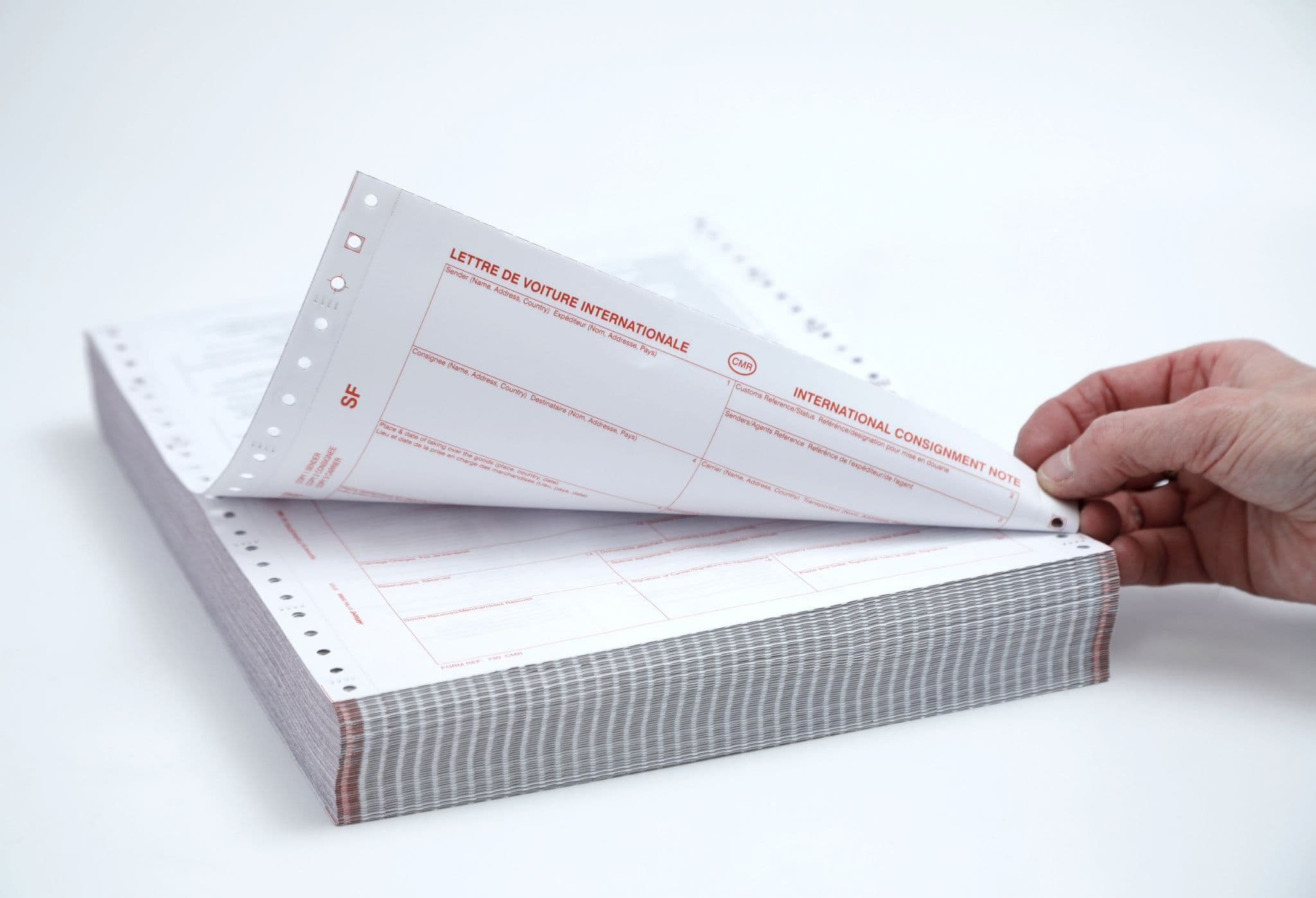
A brief history of CMR
The CMR Convention stands short for Convention relative au contrat de transport international de marchandises par route, in French - which in English translates to Convention on the Contract for the International Carriage of Goods by Road.
But why was this document created?
The CMR was born out of a need for standardization in international road transport. With increasing global trade after World War II, there was a growing demand for a common set of rules to guide and govern the transportation of goods by road across different countries.
So, in 1956, a number of countries came together in Geneva, Switzerland, to create the CMR Convention. This convention established a uniform legal framework for international road transportation, and the CMR note became its centerpiece.
The aim was to simplify and harmonize administrative procedures and documentation in international road transport to boost trade and economic cooperation among European countries.
The CMR Convention has been accepted by a significant number of countries around the world - not just European ones. As of January 2022, the roster has expanded to include 58 countries from Europe, the Middle East, and North Africa. This broad adoption just goes to show the importance of the CMR note in facilitating smooth, regulated, and reliable international road transport.
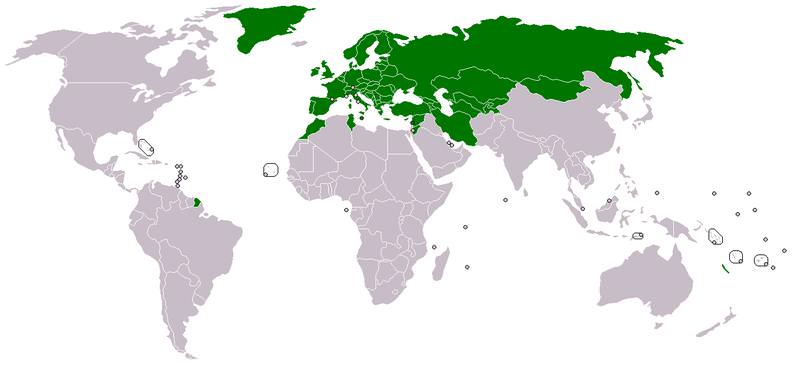
Overview of countries who ratified the CMR Convention
IRU, The World Road Transport Organization, revised the CMR model and issued a new one in 2007, which is the one we use today.
What is a CMR consignment note?
Let's dive deeper into what a CMR note is all about.
A CMR, or Consignment Note, is a legal document used in international trade whenever goods are transported by road.
It's essentially an agreement between the sender of the goods (also known as the consignor), and the carrier (the company physically transporting the goods).
This document is absolutely crucial because it provides a clear record of what's being shipped, where it's coming from, where it's going, and who's responsible for it during transit.

You can think of the CMR note, or Consignment Note, basically as a passport for goods on the move. It provides a comprehensive overview of the entire transaction, acting as written proof of the agreement between the sender (consignor) and the carrier responsible for the transportation of goods.
At its core, a CMR note contains critical details about the shipment, but it's also more than just a list of what's being shipped. It also clearly outlines the responsibilities and liabilities of the different parties involved throughout the transit process.
One key feature of the CMR note is that it's a 'negotiable document'. This means it can be passed from person to person, and the ownership of the goods can be transferred by endorsing the note. This flexibility allows goods to be sold while they're still in transit, a significant advantage in dynamic trading environments.
The CMR note also serves as a receipt of the goods. When the carrier signs it, they acknowledge they've received the goods and agreed to the transport contract. Likewise, when the receiver signs it, they confirm that they've received the goods in the right condition. If the goods are damaged or lost, the CMR note can be used to claim compensation, making it an important document in managing risk and settling disputes.
It is also a vital piece of proof in transactions without VAT, which you can submit in case of a financial check.
A CMR note is truly a multi-purpose document - it's a contract, a receipt, a record of goods, and a transferable document all rolled into one.
Its detailed nature, along with the robust legal framework in its foundation, is what makes it a cornerstone of organized, efficient, and secure road transportation across borders.

How many CMR copies are there?
A CMR note usually comes in four copies in different colors, each with its own purpose:
- Sender's or Consignor’s copy: The first copy of the CMR note is meant for the sender or consignor. It stays with them for record-keeping and future reference. This copy serves as proof that the consignor handed over the goods to the carrier under the agreed terms.
- Receiver’s or Consignee’s copy: This copy travels with the goods throughout their journey and goes to the receiver or consignee upon delivery. Once the goods are received and the consignee signs the note, the signed document proves that the delivery was successful and completed as agreed.
- Carrier's copy: The third copy of the CMR note is retained by the carrier. This copy acts as evidence that they have received the goods and are obligated to deliver them to the consignee according to the conditions stated in the contract.
- Administrative copy: The final copy is reserved for administrative purposes.
All of these copies should be filled out identically. The only thing that should change between copies is who signs and stamps it, and when.
Having multiple copies allows each party to have a complete record of the transaction, and it ensures that there's always a copy of the CMR note with the goods as they travel. This is key for transparency, accountability, and smooth operations in international road transport.
 eCarsTrade PRO TIP - Each player in the deal needs to know how to use the CMR properly. In order to accept a potential claim, most dealers, including eCarsTrade, require everything to be officially mentioned on the CMR. As a transport company, make sure to note down on the CMR everything that seems non-compliant during pick-up. This is the only way to know if something happened before or after transport.
eCarsTrade PRO TIP - Each player in the deal needs to know how to use the CMR properly. In order to accept a potential claim, most dealers, including eCarsTrade, require everything to be officially mentioned on the CMR. As a transport company, make sure to note down on the CMR everything that seems non-compliant during pick-up. This is the only way to know if something happened before or after transport.
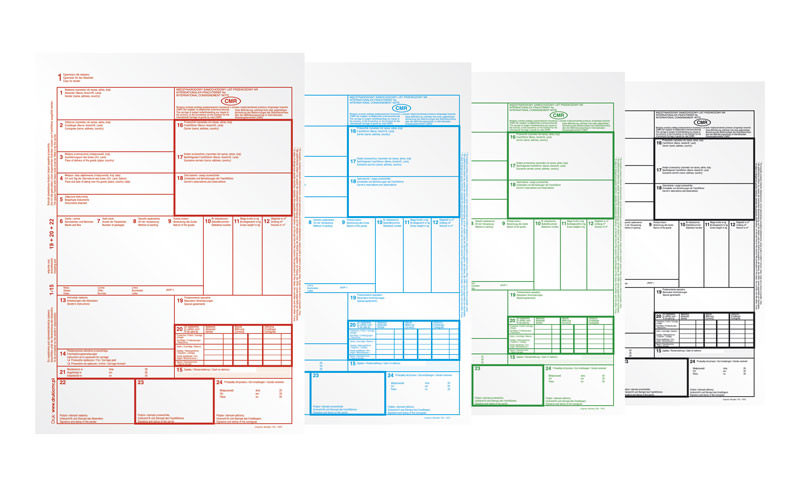
How to fill out a CMR consignment note?
For this section, we will be using the official IRU CMR example. CMRs might differ slightly from transport company to transport company, but they are the same in essence.
Before we dive into the different parts of the form, it’s important to note that every legit CMR will have its own document number. If the CMR doesn’t have a number, it’s probably a fake.

This is how to fill out a CMR note:
✔ Sender (consignor): At the very top of the CMR note, you'll find a space for the sender's information. This should include the full name and address of the sender.

✔ Receiver (consignee): Name and address of the receiver/consignee of the vehicles. The address needs to be written exactly as it appears on the invoice.

✔ Place and date of taking over the goods: This is where the carrier specifies where and when they took over the vehicles from the sender. The carrier needs to arrive with this section already filled in when they pick up the car.

✔ Place of delivery: Here, you provide the location where the vehicles will be delivered. This should align with the address provided in the consignee information.

✔ Instructions: Any special instructions for the carrier will be written here, such as if the goods require specific handling or if there are specific delivery instructions.

✔ Carrier: Information of the carrier, aka the company physically transporting the goods from point A to point B. Usually, this part needs to contain the stamp of the transport company as well as the number plate of the transport truck.

✔ Reservations and observations: This section is where the carrier can note any reservations about the condition of the goods when they took them over. It's also where they can record any observations about the delivery.
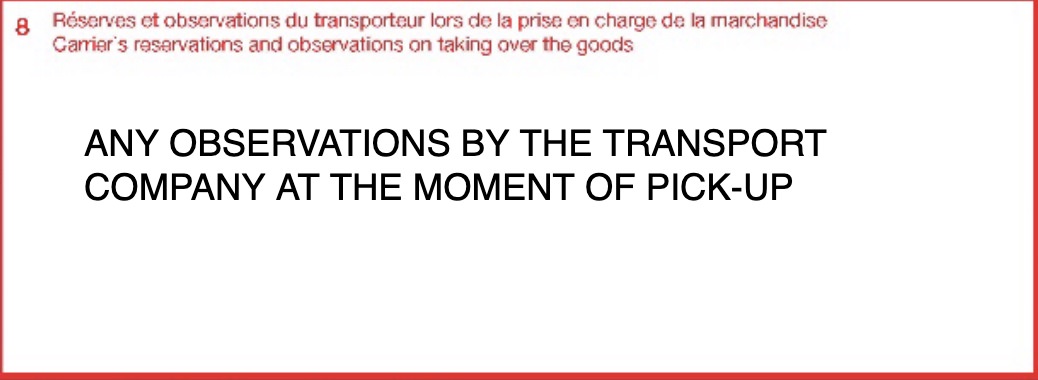
✔ Documents: This is where the carrier notes which documents were given with the vehicle at the moment of pick-up.

✔ Description of goods: This section involves detailing the nature of the goods being transported. In our case, the goods are vehicles so the information that should be typically should be included is the quantity of vehicles, brand and model of the cars, VIN number, and any identifying marks or numbers on them. Any issues with the vehicles or comments can also be written here.
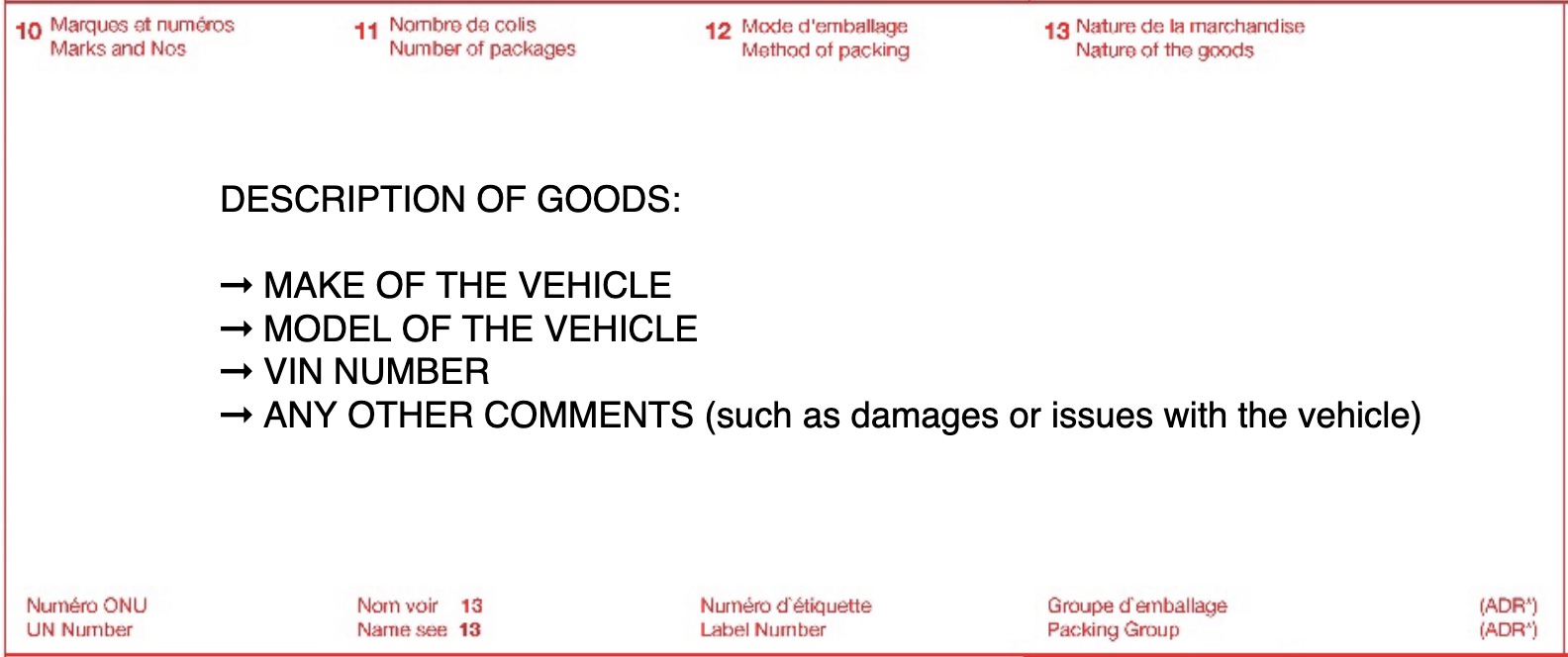
✔ CMR creation: Place and date of the creation of the CMR note

✔ Signature and stamp of the sender
✔ Signature and stamp of the carrier
✔ Signature and stamp of the receiver: Include the place of arrival, time of arrival and time of departure of the transport

 eCarsTrade PRO TIP - Remember, while filling in the CMR note, the more specific you are, the better. This document serves as a legal contract and a detailed record of the goods, so precision is key. In the event of any misunderstandings or disputes, this document will be the first point of reference, so it pays to get it right.
eCarsTrade PRO TIP - Remember, while filling in the CMR note, the more specific you are, the better. This document serves as a legal contract and a detailed record of the goods, so precision is key. In the event of any misunderstandings or disputes, this document will be the first point of reference, so it pays to get it right.
See our example of a fully filled-in CMR consignment note.
Information needed in the CMR consignment note is required by law, as seen under Articles 5 and 6 of the Convention on the Contract for the Internation Carriage of Goods by Road (C M R) and Protocol of Signature, done at Geneva on 19 May 1956.
The future of the CMR - Digital consignment notes (e-CMR)
 Important disclaimer: eCarsTrade still only accepts the paper CMR.
Important disclaimer: eCarsTrade still only accepts the paper CMR.
Technology is starting to bring the traditional CMR note into the digital era with the introduction of the e-CMR.
The e-CMR is essentially a digital version of the conventional paper CMR note. The move towards e-CMR represents a significant step forward in modernizing logistics and supply chain processes, catering to the digital needs of the current time.
Some EU countries have already started using e-CMR, but the electronic version of the consignment note is still in its infancy stages and is not consolidated yet. Here at eCarsTrade we still only accept the paper version.
The transition will not happen overnight due to the scale of operations and various legislative adjustments needed, but the benefits of an e-CMR make it the inevitable future of international road transport.

Road transport and the CMR
As we navigated together through the intricacies of international road paperwork, we hope you gained a clearer understanding of the importance of the CMR, its structure, and how to fill it out. A CMR is a powerful and necessary tool in ensuring your trading operations run smoothly and successfully.
As we progress towards a more digital future with innovations like the e-CMR, the process is only set to become more efficient and more streamlined.
Remember, every successful journey starts with a single step – or in this case, a well-filled CMR note. Here's to successful shipments and smoother transactions in your car trading journey.
Stay tuned to our blog for more insights and guides to make your work in the automotive industry easier and more profitable. Safe travels and happy trading!


